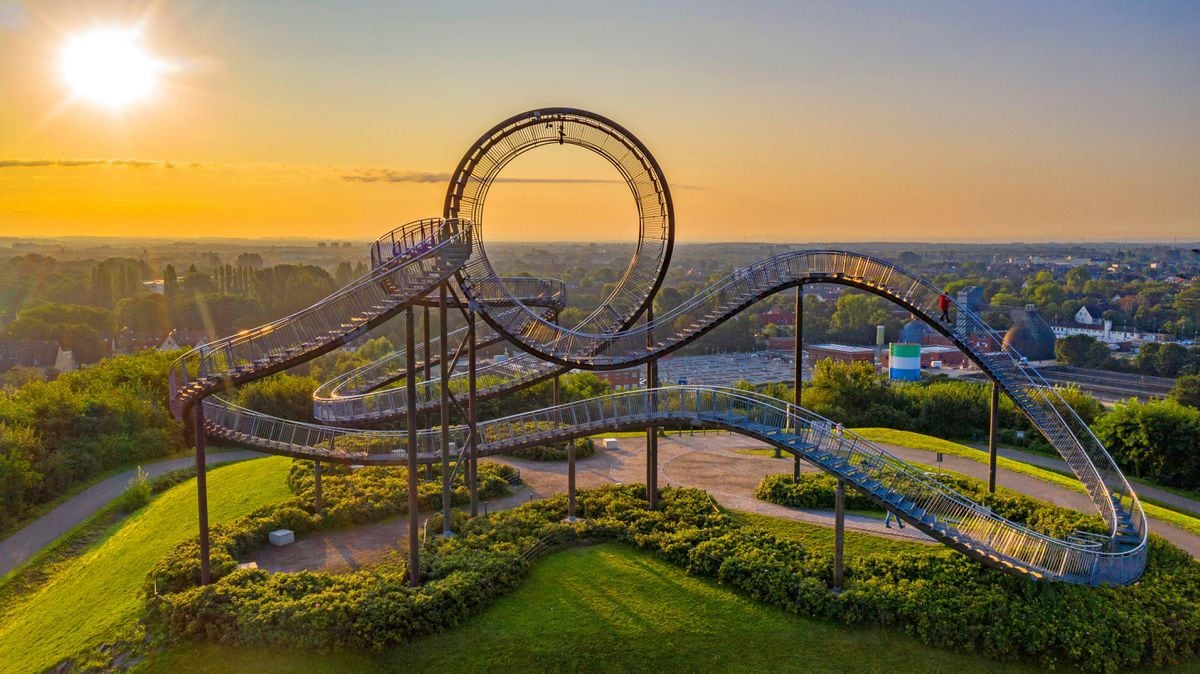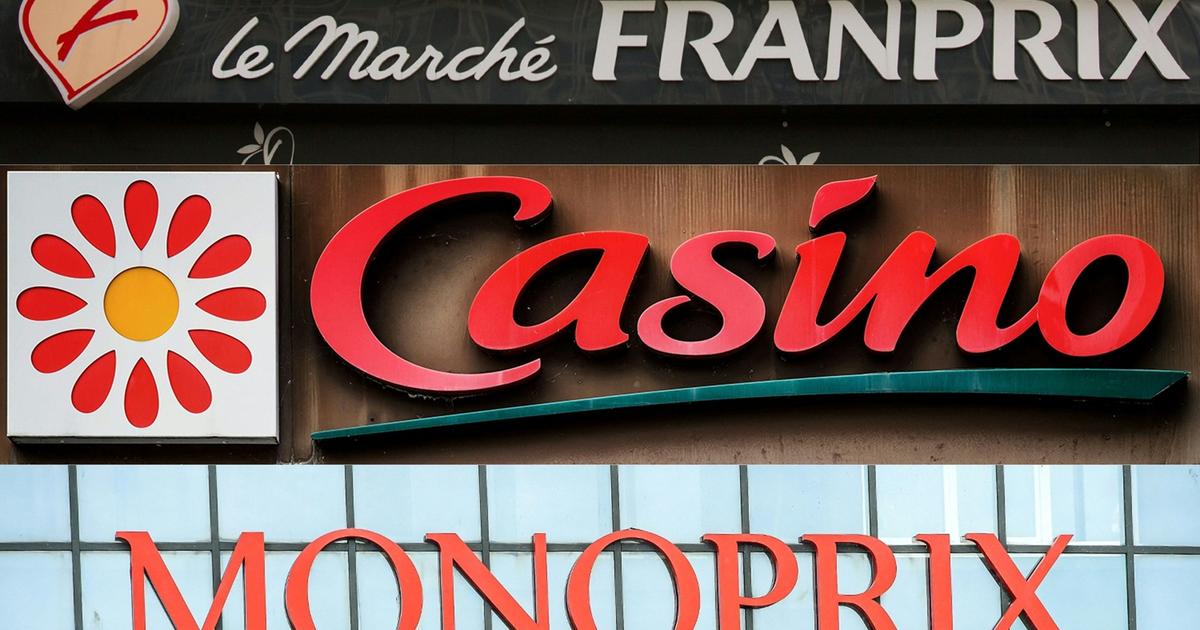Normally, roller coasters are enjoyed —or suffered— in a passive way.
One pays, forms a hellish queue, gets on the attraction in turn and waits for his seat to shoot out to scream and fear (adrenaline rush through) the worst for a few minutes.
And start again.
German architects Heike Mutter and Ulrich Genth have a different take on roller coasters.
Theirs can be explored on foot.
And that changes everything.
He makes them public, free.
It turns them into active attractions, since they require the participation of the walker, who is no longer limited to sitting and yelling.
It gives them a leisurely pace, allowing them to enjoy the view around them.
It makes them unique.
“We care about creating a positive experience while transforming this symbol of fun and speed into something more,” Genth explains by email.
More information
What it's like to ride the world's biggest roller coaster
In 2011, the duo created their first roller coaster.
Tiger and Turtle - Magic Mountain is located in the German town of Duisburg.
It is made of steel and reaches 21 meters, although the sensation of height is much greater, since it is located on top of a hill, on the outskirts of the city.
It has a total of 349 steps and 800 LED lights that illuminate it at night, creating a resplendent work of sinuous shapes.
In a short time, the monument has become iconic.
His photogenicity and the crazy idea of a roller coaster that must be traveled on foot help.
But also something much more difficult to explain with images or words: the feeling of walking through a structure whose curves make it, despite the cold steel, an organic element that changes with each step.
“While walking the track, one experiences changes in perspective simultaneously with the movement itself,” says the architect, “and the shape of the sculpture itself is difficult to understand, as it seems to change as one walks.”
Aerial view of the Tiger and Turtle, in Duisburg.
mauritius images GmbH (alamy)
Both Mutter and Genth went to visit his roller coaster to see the reaction of the people.
They spent a morning in the sun, watching the locals climb their construction.
There was a specific point that caught his attention.
A moment in which the corridor makes a 360-degree
loop
and turns on itself, in a movement quite common in classic roller coasters but impossible to perform on foot.
“Some people get upset at the exact moment they realize they have to turn around,” Genth acknowledges.
But they are happy and proud of that decision.
“We intentionally made the loop impassable, elevating it to a moment of longing, so there is a part of the mountain that can only be completed in the imagination.”
There is also a practical reason.
The
loop
could have been passable with the help of a harness or some other mechanism, but they wanted a place with free access and that could be visited safely 24 hours a day.
His intention was that the attraction could be visited by all the residents of Duisburg.
Because the mountain has a special meaning for this city.
Today it is a park, but the place where Tiger and Turtle stands - Magic Mountain was a slag dump.
The steel for its structure was made not far from here.
Duisburg is an impoverished industrial city undergoing conversion.
Smoking chimneys, blast furnaces, steel mills and coal mines made it one of the great urban concentrations of Europe.
Now many of those factories are closing (although the region maintains the highest density of highways on the continent) and the city, in economic and population decline, is looking for a new identity.
“We wanted to refer to structural change by dealing with the issue of slowing down and at the same time creating quality of life, that's how the idea came up with the walkable roller coaster,” says Genth.
The architect highlights how the impressive views from his mountain, which overlooks the industrial area, "encourage people to get involved with their own region."
The views from the Space Walk Hwanho Park, in the city of Pohang, in South Korea. MUTTER - GENTH
The reasons are different, but the result, thousands of kilometers from Duisburg, is very similar.
The second roller coaster of this duo of architects has arrived a decade later and is called Space Walk Hwanho Park.
It is located in Pohang, South Korea, and stands imposingly among the forested hills of Hwanho Park, north of the city.
Built in galvanized steel and stainless steel, it is a 333-meter metal ribbon that meanders on concrete pillars, reaching three times the height of its younger sister: it reaches 70 meters.
It is bigger, more ambitious, more imposing.
But what makes it special is not its dimensions, but something that it has in common with Tiger and Turtle: the ability to turn passers-by into children, to create a dialogue with the city and rethink its natural spaces.
Both mountains may have become an excellent tourist attraction, but both have been created, in the first instance, for the neighbors.
They could charge an entrance fee, having risen in the urban center, in more accessible places for the visitor.
But they have decided to open their doors so that anyone can climb them.
Subscribe here to the
El Viajero newsletter
and find inspiration for your next trips on our
,
and
Instagram accounts
.









